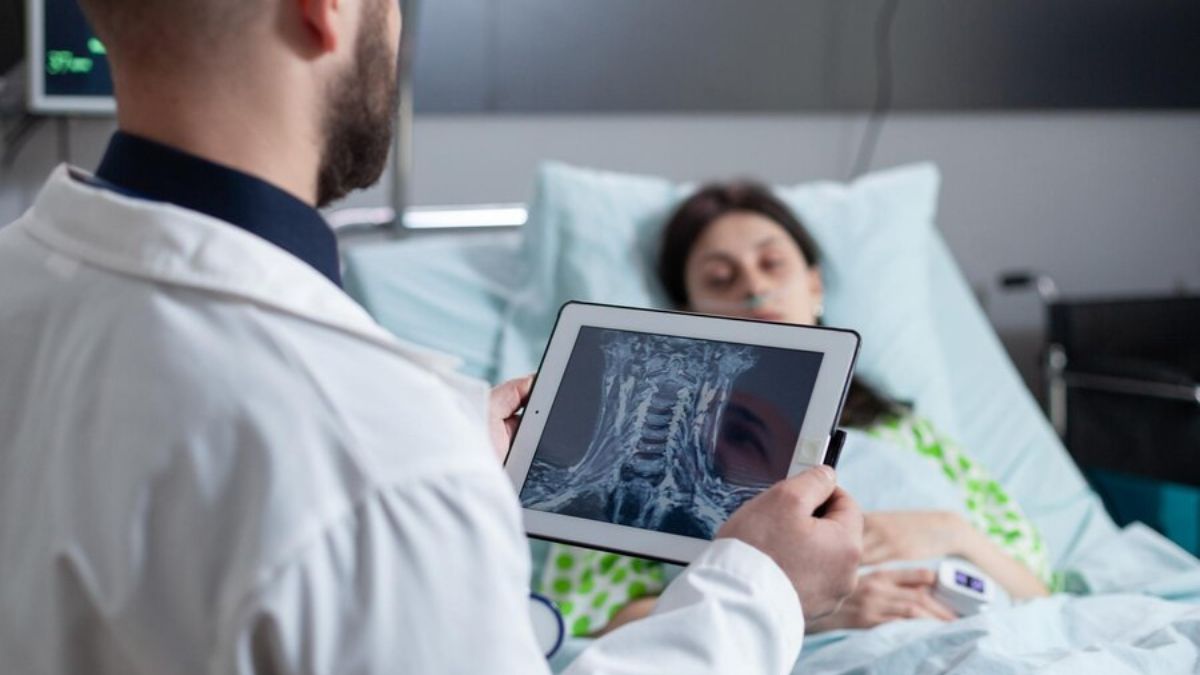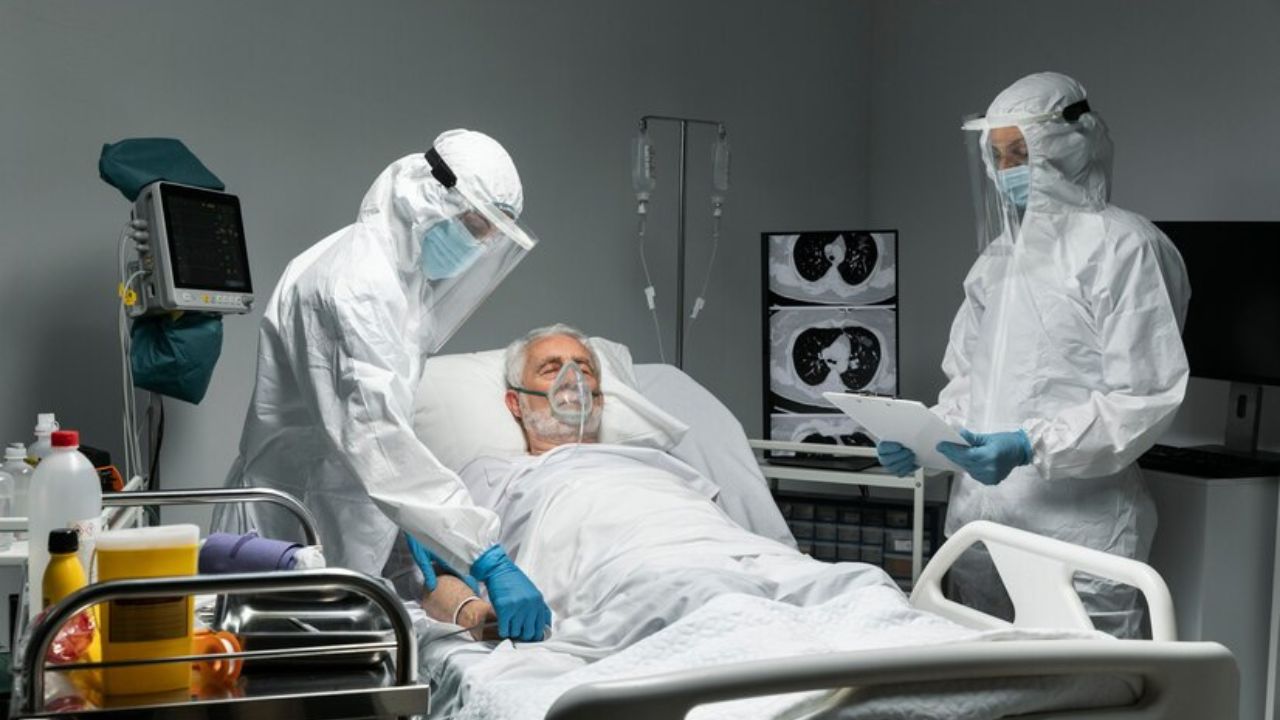HEALTH
Unlocking the Power of Luminious Scans: A Comprehensive Guide

Welcome to the world of Luminious Scans, where cutting-edge technology meets endless possibilities! Imagine unlocking a realm where invisible details come to light with just a scan. In this comprehensive guide, we will delve into the fascinating realm of Luminous Scans and discover how this innovative technology is reshaping industries and revolutionizing the way we perceive our surroundings. Get ready to embark on a journey filled with insights, benefits, tips, and future developments that will leave you in awe of the power of Luminious Scans.
How Luminious Scans Work
Luminious Scans, also known as luminescence imaging, utilize advanced technology to capture images with exceptional clarity and detail. These scans work by detecting light emitted from the subject being scanned, which is then converted into digital data for analysis.
The process involves exposing the subject to a specific type of light source, such as ultraviolet or infrared light, which triggers the emission of photons. These photons are captured by a sensor in the scanning device, creating a precise representation of the subject’s characteristics.
By harnessing this innovative technique, luminous scans can reveal intricate details that may not be visible to the naked eye. This powerful imaging tool is revolutionizing various fields including medical diagnostics, forensics, and art conservation.
With its ability to provide non-invasive insights at a microscopic level, luminous scans offer unparalleled opportunities for research and discovery across diverse industries.
The Benefits of Luminious Scans
Luminious Scans offer a range of benefits that can revolutionize various industries and processes. One major advantage is the ability to capture detailed images with exceptional clarity and precision. This level of accuracy allows for more informed decision-making and analysis in fields like healthcare, construction, and research.
Additionally, luminous scans provide a non-invasive method of data collection, reducing the need for disruptive procedures or extensive physical inspections. This not only saves time but also minimizes risks associated with traditional methods.
Furthermore, the versatility of luminous scans makes them applicable in diverse settings, from creating 3D models for architectural design to detecting structural defects in industrial equipment. The efficiency and effectiveness of these scans make them indispensable tools for enhancing productivity and quality across industries.
Various Applications of Luminious Scans
Luminious Scans have a wide range of applications across different industries, making them a versatile and powerful tool in various fields. In the medical sector, luminous scans are used for diagnostic imaging purposes, allowing healthcare professionals to visualize internal structures with exceptional detail and accuracy.
In the field of engineering, luminous scans play a crucial role in conducting structural assessments and creating detailed 3D models of buildings, bridges, and other infrastructure. This helps engineers identify potential issues and plan effective maintenance or renovation projects.
Moreover, luminous scans are also utilized in archaeology for documenting and preserving historical sites and artifacts. By capturing precise digital replicas of archaeological findings, researchers can study them in detail without causing any damage to the original pieces.
Additionally, the entertainment industry harnesses the power of luminous scans for creating lifelike characters in movies and video games through advanced motion capture technology. The possibilities are endless when it comes to leveraging luminous scans for innovation and creativity across various sectors.
Tips for Obtaining High-Quality Luminious Scans
When it comes to obtaining high-quality luminous scans, there are several tips to keep in mind. Ensure that the scanning environment is well-lit and free from any potential interference that could affect the quality of the scan.
Additionally, using a high-resolution scanner can significantly improve the clarity and detail captured in the scan. It’s also important to calibrate your scanner regularly to maintain accuracy.
Choosing the right scanning settings based on the type of document or image being scanned is crucial for achieving optimal results. Experimenting with different settings can help you find the perfect balance between resolution and file size.
Furthermore, cleaning your scanner glass and documents before scanning can eliminate dust particles or smudges that may distort the final scan. Organizing your files efficiently and naming them appropriately will make it easier to locate specific scans when needed.
Common Mistakes to Avoid with Luminious Scans
When it comes to utilizing Luminious Scans, there are some common mistakes that one should be aware of to make the most out of this powerful technology. One mistake to avoid is not calibrating the scanner properly before conducting a scan. This can result in inaccurate and unreliable data, leading to potential errors down the line.
Another common mistake is overlooking the importance of proper lighting conditions during scanning. Poor lighting can affect the quality of the scan and produce subpar results. It’s crucial to ensure adequate lighting for optimal performance.
Additionally, rushing through the scanning process without attention to detail can lead to missed information or incomplete scans. Taking your time and being thorough in each step will ultimately yield better outcomes.
Neglecting regular maintenance and updates for your scanning equipment can hinder its performance over time. It’s essential to keep your tools well-maintained and up-to-date for consistent high-quality results with luminous scans.
Future Developments and Possibilities for Luminious Scans
Exciting advancements in technology continue to propel the field of luminous scans toward new horizons.
Researchers are exploring the integration of artificial intelligence algorithms to enhance the accuracy and speed of image processing, opening up possibilities for real-time analysis and diagnosis.
Moreover, there is a growing interest in expanding the applications of luminous scans beyond medical imaging. Industries such as aerospace, automotive, and environmental monitoring are tapping into this technology for various innovative purposes.
The future holds immense potential for miniaturization of scanning devices, making them more portable and accessible in diverse settings. This could revolutionize how we perceive and utilize luminous scans in our daily lives.
As we look ahead, collaborative efforts between scientists, engineers, and healthcare professionals will likely drive further breakthroughs in enhancing the capabilities and reach of luminous scan technology.
Conclusion
As technology continues to advance, the potential of Luminious Scanss boundless. From medical diagnostics to industrial applications, the power of this innovative imaging technique is undeniable. By understanding how luminous scans work, leveraging their benefits, and avoiding common mistakes, individuals and industries can unlock a new realm of possibilities.
With continuous research and development in the field of luminous scans, we can expect even more refined techniques and enhanced applications in the future. The evolution of this technology holds promise for improved accuracy, efficiency, and cost-effectiveness across various sectors.
Embracing the capabilities of Luminious Scans opens doors to unprecedented insights and solutions. As we look ahead to what lies beyond the horizon for this cutting-edge technology, one thing remains clear – its transformative impact will shape our world in ways we have yet to imagine.
HEALTH
Top Benefits of NIPT: How Non-Invasive Testing Enhances Prenatal Care

Are you expecting and curious about prenatal screening? Have you heard about noninvasive prenatal screening and its benefits? Ensuring safety during this critical process is of the utmost importance for both mother and baby.
One such breakthrough method is the NIPT test, offering a reliable way to screen for genetic conditions. In this article, we will delve into this screening, highlighting its simplicity, safety, and effectiveness. Discover how this test can provide peace of mind and essential information for expectant parents.
Peace of Mind from the Start
Traditionally, prenatal screening for chromosomal abnormalities involved procedures like amniocentesis or chorionic villus sampling (CVS). While these tests are accurate, they carry a small risk of miscarriage. NIPT analyzes fetal DNA fragments in the mother’s bloodstream, allowing healthcare providers to assess certain chromosomal conditions. This provides expecting parents with invaluable peace of mind.
Increased Detection Rates
This screening boasts significantly higher detection rates for chromosomal abnormalities than traditional screening methods. It can effectively identify conditions like Down syndrome, Edwards syndrome (trisomy 18), and Patau syndrome (trisomy 13). This improved accuracy translates to a clearer picture of your baby’s health. The reports help make informed decisions regarding further prenatal care and potential interventions.
Reduced Need for Invasive Procedures
A positive result from traditional screening methods often necessitates confirmation through invasive procedures. However, the high accuracy of NIPT significantly reduces the need for such procedures. The test results can guide healthcare providers in recommending further testing only when necessary. The whole process minimizes potential risks associated with invasive procedures.
Personalized Prenatal Care
The test report allows healthcare professionals to tailor personalized prenatal care plans to each pregnancy. This approach allows for closer monitoring and managing potential risks, leading to better outcomes. Your doctor can plan for additional scans if the NIPT indicates a higher risk. Such an approach ensures the baby receives the most appropriate care throughout the pregnancy.
Informed Decision-Making
NIPT empowers expectant parents with valuable information that can guide their decision-making throughout the pregnancy. Thus, parents can explore various options, such as early intervention programs or connecting with comprehensive support. This knowledge empowers them to make practical decisions that best suit their needs and circumstances.
Reduced Parental Anxiety
The uncertainty surrounding potential chromosomal abnormalities can cause significant anxiety during pregnancy. NIPT results, with their high accuracy, can significantly reduce this anxiety for expectant parents. Knowing the likelihood of certain conditions allows parents to focus on enjoying their pregnancy journey.
Identifying Rarer Conditions
This screening primarily focuses on detecting common chromosome-related abnormalities but can also identify microdeletions. These are more minor chromosomal deletions that can cause various health concerns. This potential for broader detection allows for earlier identification and management of even rarer conditions.
A More Prepared Birthing Experience
Accurate test reports influence decisions regarding delivery plans. For example, a high-risk NIPT result might require the specialist to be present during delivery. This advanced knowledge allows parents and healthcare providers to collaborate on a more prepared and informed birthing experience.
Potential Savings for Expectant Parents
While the cost of NIPT can vary, it can be a cost-effective option in the long run. NIPT can contribute to overall healthcare costs by reducing the need for invasive procedures. Early detection and intervention for certain conditions can minimize future healthcare expenses.
Therefore, the above-mentioned benefits of the NIPT test paint a clear picture: it empowers expectant parents with knowledge. So, are you ready to experience these advantages firsthand? Consider learning about this screening and discussing it with your doctor. Consulting reputed clinics that can provide valuable guidance and ensure a smooth and informative experience.
HEALTH
Leveling Up: Treating Anxiety by Playing the Game of Life

Welcome, player! In this game called Life, one of the toughest bosses you’ll face is Anxiety. Just like in any video game, you need the right strategies, power-ups, and tactics to defeat it. Let’s dive into this quest and learn how to level up your mental health, taking care of yourself like the ultimate gaming champion!
Understanding the Boss: Anxiety
In our game, Anxiety is a formidable foe. It creeps up on you, causing feelings of worry, fear, and unease. It can affect your performance, just like a sneaky game glitch. Recognizing Anxiety is the first step. Look out for signs such as:
-
Racing thoughts
-
Difficulty concentrating
-
Rapid heartbeat
-
Feeling restless or on edge
Once you identify Anxiety, you can strategize to combat it.
Building Your Character: Self-Care Fundamentals
Every game has a character that needs to be built up with health, stamina, and skills. In Life, your character is you, and self-care is your primary stat booster.
1. Health Points (HP): Physical Health
Your HP is crucial. Without it, you can’t perform well in the game. Boost your HP by:
-
Exercise: Regular physical activity releases endorphins, the body’s natural stress relievers. Aim for at least 30 minutes of exercise most days.
-
Nutrition: Fuel your body with a balanced diet rich in fruits, vegetables, lean proteins, and whole grains. Avoid excessive caffeine and sugar, which can spike Anxiety levels.
-
Sleep: Ensure you get 7-9 hours of quality sleep each night. Good sleep restores your HP and prepares you for the challenges ahead.
2. Mana Points (MP): Mental Health
Your MP is your mental stamina, crucial for casting the spells needed to ward off Anxiety.
-
Mindfulness: Practice mindfulness or meditation daily. Techniques like deep breathing, progressive muscle relaxation, and guided imagery can significantly reduce Anxiety.
-
Positive Affirmations: Start your day with positive affirmations to set a confident tone. Phrases like “I am capable,” “I am strong,” and “I can handle this” can empower you.
-
Breaks and Leisure: Just like in games, taking breaks is essential. Engage in activities you love, such as reading, drawing, or gaming, to recharge your MP.
Gathering Resources: Social Support
In every game, resources are vital. In Life, social support is a key resource.
-
Allies: Surround yourself with supportive friends and family who can offer encouragement and assistance. Don’t be afraid to reach out for help when needed.
-
Community: Join groups or clubs that interest you. Whether it’s a book club, sports team, or online forum, being part of a community can provide a sense of belonging and reduce feelings of Anxiety.
-
Professional Help: Sometimes, you need a guide or a healer. Therapists, counselors, and support groups can offer professional assistance to help you navigate Anxiety. Check out the professionals for Anxiety Treatment in Los Angeles.
Skill Development: Coping Strategies
To defeat Anxiety, you need a set of skills, just like mastering special moves in a game.
1. Time Management
Effective time management reduces stress and helps you stay on top of tasks. Use tools like planners, calendars, and to-do lists to organize your day and prioritize activities.
2. Cognitive Behavioral Techniques
Learn to challenge negative thoughts and replace them with positive ones. If you catch yourself thinking, “I can’t do this,” reframe it to, “I’ll do my best, and that’s enough.”
3. Problem-Solving Skills
Develop your problem-solving skills to tackle challenges head-on. Break down problems into smaller, manageable parts and address them one by one.
Power-Ups: Healthy Habits
Incorporate power-ups into your daily routine to enhance your gameplay:
-
Hydration: Drink plenty of water. Staying hydrated keeps your body and mind in peak condition.
-
Nature: Spend time outdoors. Nature walks or simply sitting in a park can have a calming effect on your mind.
-
Hobbies: Engage in hobbies that bring you joy and relaxation. Whether it’s painting, gardening, or coding, hobbies provide a mental escape and reduce Anxiety.
Facing the Boss: Practical Tips
When Anxiety strikes, use these practical tips to manage it:
-
Deep Breathing: Practice deep breathing exercises. Inhale slowly for four counts, hold for four, and exhale for four. Repeat until you feel calmer.
-
Grounding Techniques: Use grounding techniques to bring yourself back to the present moment. Focus on five things you can see, four you can touch, three you can hear, two you can smell, and one you can taste.
-
Progressive Muscle Relaxation: Tense and then slowly relax each muscle group, starting from your toes and working up to your head.
The Final Quest: Long-Term Management
Treating Anxiety is an ongoing quest. Regularly update your strategies, seek new resources, and refine your skills. Remember, even the best gamers face tough levels, but with persistence and the right tactics, you can overcome them.
In this game called Life, self-care is your ultimate strategy. Keep your HP and MP high, gather resources, develop skills, and use power-ups wisely. You’ve got this, player! Now go out there and conquer Anxiety like the true champion you are!
HEALTH
Facilities That Use Cutting Edge Medical Technology For Intubation

In the world of modern healthcare, precision and efficiency are paramount. Advances in medical technology have transformed countless procedures, and intubation is no exception. For healthcare facilities striving to provide the highest standards of patient care, leveraging cutting-edge intubation technology is becoming increasingly essential.
If you’re a healthcare professional or administrator, understanding the latest innovations in intubation can help you make informed decisions that enhance patient outcomes, streamline operations, and reduce risks. This blog post will explore the range of advanced tools and techniques that are revolutionizing intubation, offering practical insights and actionable tips for integrating them into your facility.
The Evolution of Intubation Technology
Intubation, the process of inserting a tube into a patient’s airway to assist with breathing, has come a long way since its inception. Traditional methods, though effective, often posed certain challenges and risks. However, with the advent of cutting-edge technology, intubation has evolved into a more precise and safer procedure.
Historically, direct laryngoscopy was the standard method for intubation, requiring significant skill and experience. Today, innovations such as video laryngoscopy and fiber-optic intubation offer enhanced visualization and accuracy. These advancements not only improve the success rates of intubation but also minimize complications, leading to better patient outcomes.
Video Laryngoscopy: A Game Changer in Airway Management
Video laryngoscopy has emerged as a revolutionary tool in airway management, providing healthcare professionals with a clear view of the vocal cords and surrounding structures. Unlike traditional laryngoscopy, which relies on direct line-of-sight, video laryngoscopes use cameras to transmit real-time images to a monitor, allowing for precise tube placement.
The benefits of video laryngoscopy are manifold. It enhances the success rate of intubation, especially in difficult airway scenarios. By improving visualization, it reduces the risk of trauma to the airway and surrounding tissues. Additionally, video laryngoscopy facilitates better training and skill development for medical personnel, as they can observe and learn from the procedure in real-time.
Fiber-Optic Intubation: Precision and Flexibility
Fiber-optic intubation is another advanced technique that has revolutionized airway management. This method involves the use of a flexible fiber-optic scope to guide the endotracheal tube into the trachea. It is particularly useful in cases where traditional laryngoscopy may be challenging, such as patients with limited mouth opening or cervical spine instability.
One of the key advantages of fiber-optic intubation is its ability to provide continuous visualization throughout the procedure. This ensures precise tube placement and reduces the risk of complications. Additionally, fiber-optic intubation can be performed with the patient awake, making it a valuable option for patients with anticipated difficult airways.
Using AI to Enhance Intubation Procedures
Artificial intelligence (AI) is making significant strides in healthcare, and intubation is no exception. AI-powered tools can analyze patient data and predict potential difficulties in airway management, allowing medical professionals to plan and execute intubation with greater precision.
AI algorithms can also assist in real-time decision-making during intubation procedures. For instance, they can provide guidance on optimal tube size, placement angles, and pressure levels. By integrating AI into intubation practices, healthcare facilities can reduce the risk of errors, improve procedural outcomes, and enhance patient safety.
The Role of Simulation Training in Mastering Intubation
Simulation training has become an integral part of medical education, providing healthcare professionals with hands-on experience in a controlled and safe environment. High-fidelity simulators replicate real-life scenarios, allowing trainees to practice intubation techniques and develop their skills without putting patients at risk.
Simulation training offers several benefits. It enhances the proficiency and confidence of medical personnel, ensuring they are well-prepared for real-world intubation challenges. It also allows for the development and testing of new intubation techniques and technologies, driving continuous improvement in patient care.
The Importance of Continuous Monitoring During Intubation
Continuous monitoring is crucial during intubation to ensure patient safety and optimize outcomes. Advanced monitoring systems provide real-time data on vital parameters such as oxygen saturation, carbon dioxide levels, and airway pressure. This information allows healthcare professionals to make informed decisions and promptly address any issues that may arise.
Innovative monitoring technologies, such as capnography and pulse oximetry, have become standard practices in modern intubation. Capnography measures the concentration of carbon dioxide in exhaled breath, providing valuable insights into the patient’s respiratory status. Pulse oximetry continuously monitors oxygen saturation levels, ensuring adequate oxygenation throughout the procedure.
Navigating Challenges with Difficult Airway Management
Difficult airway management is a critical aspect of intubation, as it poses significant challenges and risks. Advances in technology have introduced a range of specialized tools and techniques to address difficult airway scenarios effectively.
Devices such as the bougie and stylets provide additional support and guidance during intubation, facilitating tube placement in challenging cases. Additionally, supraglottic airway devices offer alternative options for airway management, reducing the need for invasive procedures in certain situations.
Enhancing Patient Safety with Pre-Intubation Assessments
Pre-intubation assessments play a vital role in ensuring patient safety and optimizing intubation outcomes. Advanced assessment tools and protocols allow healthcare professionals to evaluate the patient’s airway anatomy, identify potential challenges, and develop a tailored intubation plan.
Techniques such as the Mallampati score, ultrasound imaging, and 3D airway modeling provide valuable insights into airway anatomy and predict potential difficulties. By conducting thorough pre-intubation assessments, healthcare facilities can mitigate risks and improve the overall success rate of intubation procedures.
The Future of Intubation Technology
The field of intubation technology is continuously evolving, with ongoing research and development driving innovation. Emerging technologies such as robotic-assisted intubation and augmented reality (AR) hold immense potential in revolutionizing airway management.
Robotic-assisted intubation offers precise and controlled tube placement, reducing the risk of human error. AR technology can provide real-time visualization and guidance during intubation procedures, enhancing accuracy and efficiency. These advancements have the potential to reshape the future of intubation, further improving patient outcomes and safety.
The Role of Telemedicine in Remote Intubation Support
Telemedicine has gained significant traction in recent years, enabling remote consultations and support in various medical fields. In the context of intubation, telemedicine can provide valuable assistance to healthcare professionals, especially in resource-limited settings or during emergencies.
Through telemedicine platforms, experienced clinicians can remotely guide and supervise intubation procedures, offering real-time feedback and expertise. This collaborative approach enhances the quality of care and ensures optimal outcomes, even in challenging situations.
Building a Culture of Continuous Improvement in Intubation Practices
To stay at the forefront of intubation technology, healthcare facilities must foster a culture of continuous improvement. This involves ongoing education and training, regular performance evaluations, and the implementation of best practices.
By staying updated with the latest advancements and incorporating evidence-based guidelines, healthcare professionals can enhance their skills and deliver the highest standards of care. Continuous improvement initiatives also drive innovation and ensure that intubation practices evolve in line with emerging technologies and research.
Reducing Complications with Advanced Airway Devices
Complications during intubation can have serious consequences for patients. Advanced airway devices, such as video laryngoscopes, fiber-optic scopes, and supraglottic airway devices, significantly reduce the risk of complications and improve patient safety.
These devices offer enhanced visualization, precise tube placement, and alternative airway management options, ensuring a higher success rate and minimizing trauma to the airway. By utilizing advanced airway devices, healthcare facilities can provide safer and more effective intubation procedures.
Conclusion
Facilities That Use Cutting Edge Medical Technology For Intubation is essential for delivering the highest standards of patient care. From video laryngoscopy and fiber-optic intubation to AI-powered tools and simulation training, these advancements offer numerous benefits, including improved success rates, enhanced patient safety, and streamlined operations.
-

 ENTERTAINMENT1 week ago
ENTERTAINMENT1 week agoInside a Coomer Party: A Closer Look at this Growing Trend
-

 HOME2 weeks ago
HOME2 weeks agoExploring the Mystical World of Aoomaal: A Comprehensive Guide
-

 CRYPTO3 months ago
CRYPTO3 months agoUSDTCCK: The Rising Star in the World of Cryptocurrency
-

 HOME2 months ago
HOME2 months agoSandra Orlow: The Teen Model Who Captivated the Internet
-

 HEALTH3 months ago
HEALTH3 months agoThe Health Benefits of Avple: Why You Should Add it to Your Diet
-

 HEALTH2 weeks ago
HEALTH2 weeks agoKecveto: The Ultimate Superfood for Boosting Energy and Vitality
-

 BUSINESS1 month ago
BUSINESS1 month agoImportance of PCI DSS Compliance for Merchant Service Providers
-

 HEALTH2 months ago
HEALTH2 months agoIntegrating Semaglutide into Your Weight Loss Plan: A Practical Guide
